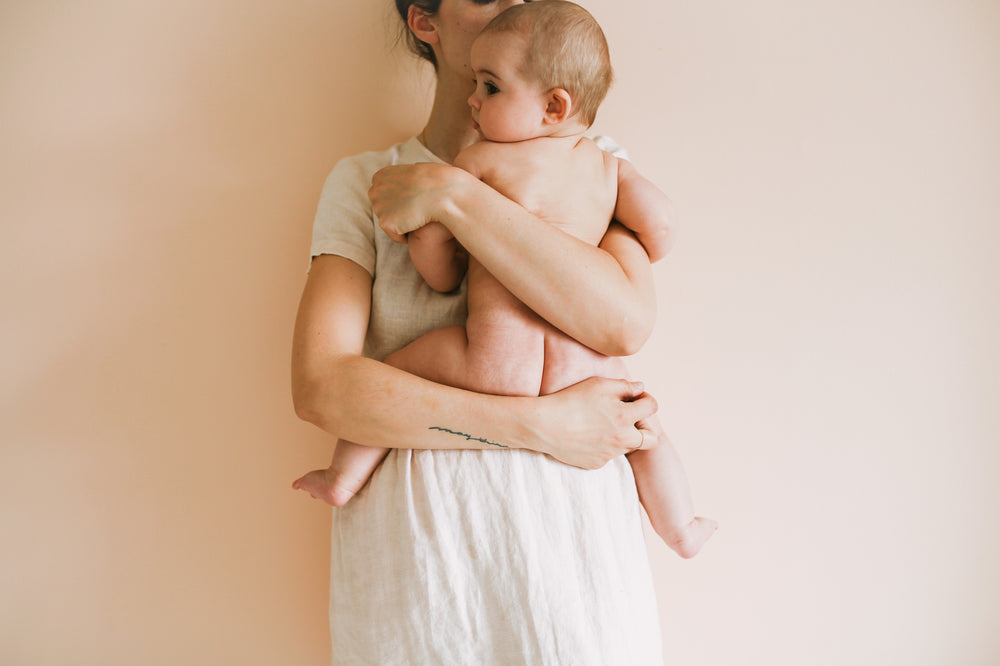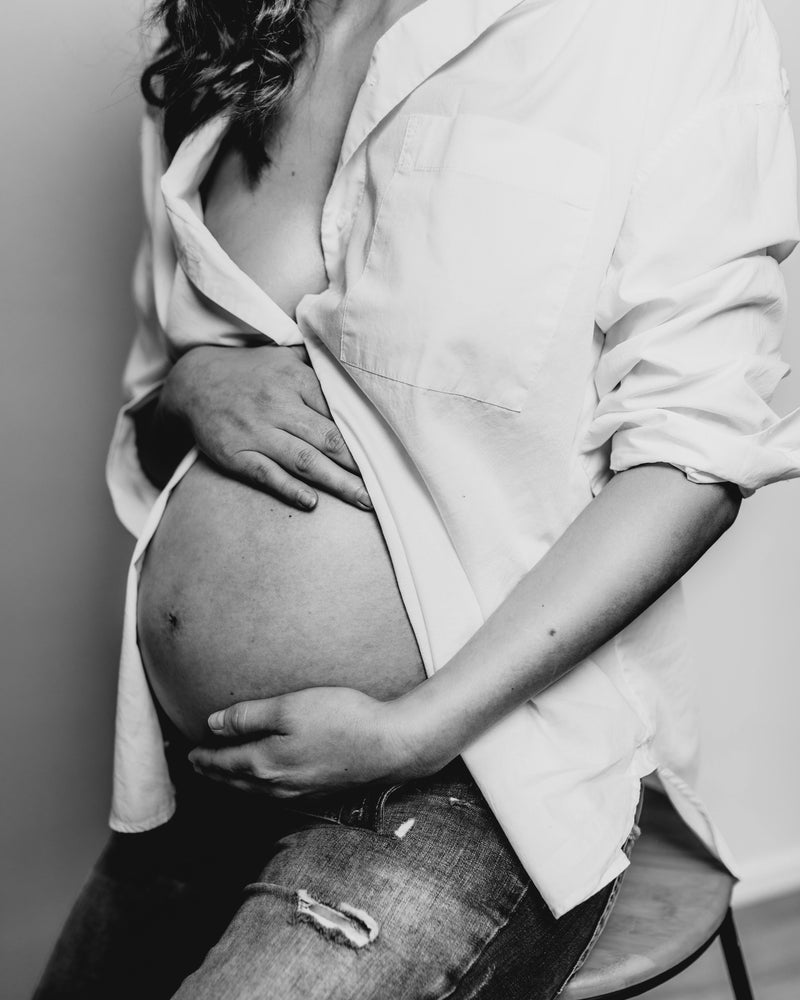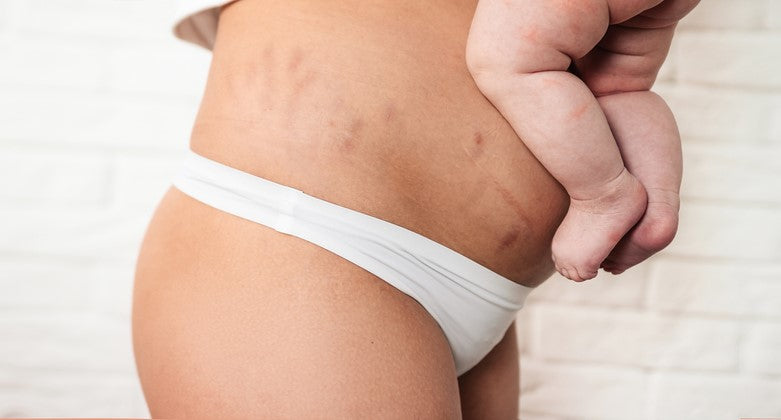Over 30 percent of all deliveries in the US are by C-section, and while there is little data on how many of those are unplanned, many women go into labor expecting a vaginal or even a natural birth and don’t prepare for the possibility of surgical intervention. We spoke to three women whose birth plans all included vaginal deliveries and none of whom expected things to turn out the way they did.
“I was pregnant with twins and wanted to deliver without medication.”
I didn’t read anything about C-sections because I was so set on having a vaginal birth. I was pregnant with twins and wanted to deliver without medication, but of course twin births are considered high-risk.
My water broke at thirty-seven weeks, and I pushed for six hours. My doctor wanted me to have an epidural just in case I had to have a C-section. (Having the epidural catheter in place would make it easier for me and the medical staff.)
My first baby got stuck in my vagina. They could have pulled him out with forceps, but my second baby was behind him head-down. That’s when my husband asked, “If it were your wife on the table, what would you tell her to do?” The doctor said, “I would tell her to have the C-section.” At that point, I felt like we’d really tried. We’d done what we could, so that part of it—switching from vaginal delivery to C-section—wasn’t traumatic. The most important thing was to get my babies out healthy and safe.
It was important to me to have skin-to-skin contact as soon as my first baby came out, but I was trembling from the anesthesia. I was so scared I was going to drop him; I felt like I had no control over my body. My husband held him to me, and the nurse helped. The feeling that I needed to have my kids on me was very instinctual. It was also upsetting because even after the procedure, I was violently trembling, and I couldn’t hold them to me without support.
I’d wanted the doctor to save my placenta because I wanted placenta pills. When you have a C-section, the medical team has to send the placenta to pathology; it’s protocol. They try to keep it as sterile as possible, but it icked me out to think of the placenta going through pathology. After that, I didn’t want to eat it, so I had to scrap that plan. That felt like the biggest loss in terms of the C-section. —Erin Smid
“After sixteen hours of laboring and two hours of pushing, I had blood vessels popping in my face.”
With my first [baby], I started going into labor at about thirty-eight weeks and did have a plan to try to have a natural birth. I wasn’t married to an unmedicated delivery but desired a vaginal delivery for recovery’s sake. Trying to wrap my head around the process of taking care of a newborn, especially for the first time, after having a major abdominal surgery, seemed less than ideal. After sixteen hours of laboring and two hours of pushing, I had blood vessels popping in my face from trying so hard to make this happen. At one point, the doctor turned and said, “We’re either going to do a C-section now or the vacuum.”
I remember turning to my partner because I was so spent and feeling like I couldn’t make an adequate informed decision at that time of heightened emotional and physical exhaustion. He asked the right questions: What does the vacuum entail? What would the C-section be like? And just, you know, trying to weigh those heavy decisions quickly. We opted for the C-section. With emotions running high, I was ready to experience relief and hold the baby in my arms. The hospital where I delivered was extremely encouraging and nurturing, and every nurse and doctor was better than the last, so I felt less alone.
The sadness and grief and loneliness around the experience, even shame and guilt, came once we were home and people asked about my birth story. I felt very protective, like I needed to explain or justify why I’d deviated off course. I think it’s loaded emotionally and hard to process.
I was overly justifying why it had happened. I was even providing strangers with explanations or rationales. It took close to six months of grieving the loss of what I’d expected my birth experience to be or what I’d previously viewed as normal, as if it were less than compared to someone who was able to deliver vaginally. It took a lot of internal work and getting to a space of acceptance of and pride in being able to deliver my baby however I needed to, without the shame and embarrassment. I think it took a lot of internal work as well as finding a nourishing community where that could be normalized rather than stigmatized.
As women, sometimes we’re put in the position of viewing C-sections as abnormal, particularly one that’s unexpected or not planned. And yet, after having two more unexpected C-sections, I learned that for me, vaginal delivery was never going to be in the cards. The C-section scar that’s been opened up three different times is something that I absolutely wear with pride at this point. I show my kids and share with them that this is where they came out and what that looks like. Having that mark on my body is something I can now reflect fondly on, but it took a while to get there. —Julie Kupfer
“I experienced postpartum depression and anxiety, and I think [seeing my baby] was the first glimmer of it.”
Ten days after my due date, the doctor said, “All right, let’s get this show on the road.” I was planning on a vaginal birth, and I knew I would have an epidural. I was scared, but the epidural helped me a lot. I just slept. I didn’t feel contractions at all, but in the middle of the night, I had a fever, and they strongly recommended doing a C-section so the infection wouldn’t spread to the baby.
In the operating room, my doctor asked what music I wanted to listen to. I couldn’t think straight. My husband said Bob Marley. The procedure was surreal: I was sleep-deprived and on these drugs, and when they took my son out and showed him to me, I was like, “Oh my god, look at all that hair. Are you sure he’s mine?” The thought that went through my mind was, What have we done to our lives? I definitely experienced postpartum depression and anxiety, and I think that was the first glimmer of it.
They gave me the baby to nurse, and it was beautiful. They gave me Percocet for the pain of the operation, and I didn’t know it at that time but Percocet—and any opioid—causes bloating and constipation. That was the most painful part. They sent me home, and I didn’t poop for a week. In the middle of the night, I was sweating on the bathroom floor and had to send my husband to the store to buy an enema. My breasts were engorged, and I was so bloated that some of the staples from the surgery opened up. I had to go back to the doctor to get stitched up. It was awful. The message I want to yell from the rooftops is, “Avoid the Percocet!” Eat so much fiber, drink prune juice, and take care of your bowels. It was the worst pain I’ve ever been in.
I’m going to have my third C-section in September, and I’m still slightly terrified of the whole process because it’s scary to get yourself sliced open, but I feel like I’m better equipped to handle all of this, including the postpartum depression and anxiety. With my doctor and psychiatrist, I have decided I’ll be on Zoloft during the pregnancy and after I give birth, and I think that’ll be very, very helpful. —Annie Berkowitz






